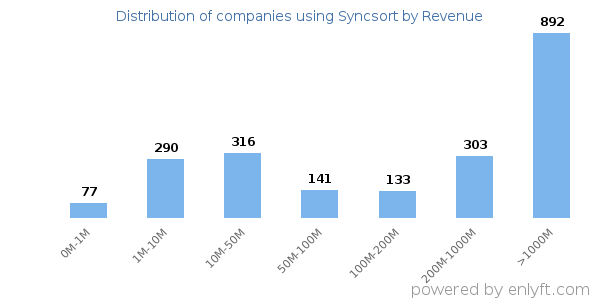Companies using Syncsort
We have data on 2,019 companies that use Syncsort. The companies using Syncsort are most often found in United States and in the Information Technology and Services industry. Syncsort is most often used by companies with >10000 employees and >1000M dollars in revenue. Our data for Syncsort usage goes back as far as 9 years and 3 months.
If you’re interested in the companies that use Syncsort, you may want to check out Amazon API Gateway and SQL Server Integration Services (SSIS) as well.
Who uses Syncsort?
| Company | Accenture PLC |
| Website | accenture.com |
| Country | Ireland |
| Revenue | >1000M |
| Company Size | >10000 |
| Company | Hermès International S.A |
| Website | hermes.com |
| Country | France |
| Revenue | >1000M |
| Company Size | >10000 |
| Company | Cognizant Technology Solutions Corp |
| Website | cognizant.com |
| Country | United States |
| Revenue | >1000M |
| Company Size | >10000 |
| Company | Choice Hotels |
| Website | choicehotels.com |
| Country | United States |
| Revenue | >1000M |
| Company Size | 1000-5000 |
| Company | Infosys Ltd |
| Website | infosys.com |
| Country | India |
| Revenue | >1000M |
| Company Size | >10000 |
| Company | Website | Country | Revenue | Company Size |
|---|---|---|---|---|
| Accenture PLC | accenture.com | Ireland | >1000M | >10000 |
| Hermès International S.A | hermes.com | France | >1000M | >10000 |
| Cognizant Technology Solutions Corp | cognizant.com | United States | >1000M | >10000 |
| Choice Hotels | choicehotels.com | United States | >1000M | 1000-5000 |
| Infosys Ltd | infosys.com | India | >1000M | >10000 |
Target Syncsort customers to accomplish your sales and marketing goals.
Syncsort Market Share and Competitors in Data Integration
We use the best indexing techniques combined with advanced data science to monitor the market share of over 15,000 technology products, including Data Integration. By scanning billions of public documents, we are able to collect deep insights on every company, with over 100 data fields per company at an average. In the Data Integration category, Syncsort has a market share of about 0.5%. Other major and competing products in this category include:
Data Integration
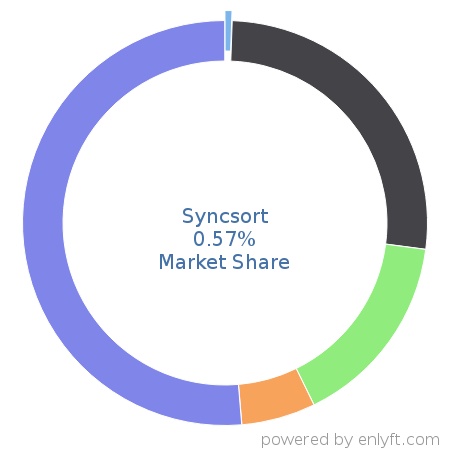

What is Syncsort?
Syncsort specializes in big data, high speed sorting products and data integration software and services.
Top Industries that use Syncsort
Looking at Syncsort customers by industry, we find that Information Technology and Services (23%), Financial Services (8%), Computer Software (7%) and Insurance (5%) are the largest segments.
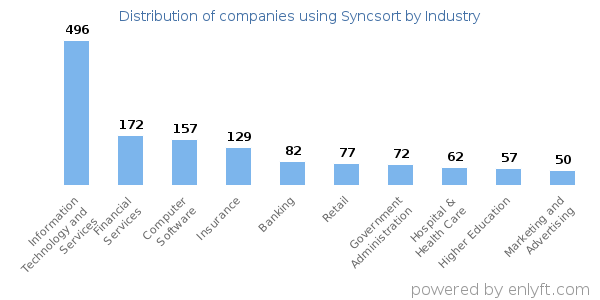
Top Countries that use Syncsort
75% of Syncsort customers are in United States.
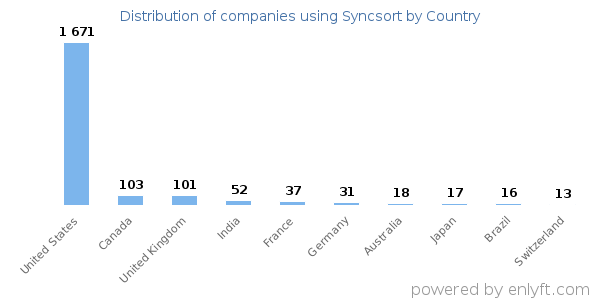
Distribution of companies that use Syncsort based on company size (Employees)
Of all the customers that are using Syncsort, a majority (52%) are large (>1000 employees), 17% are small (<50 employees) and 30% are medium-sized.
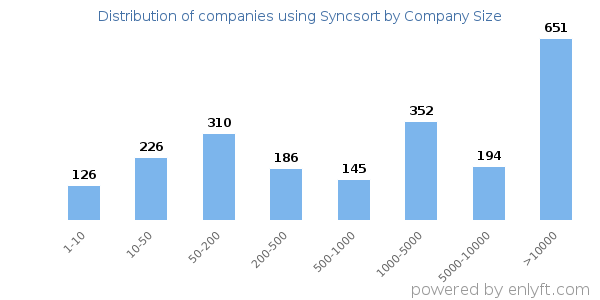
Distribution of companies that use Syncsort based on company size (Revenue)
Of all the customers that are using Syncsort, a majority (53%) are large (>$1000M), 29% are small (<$50M) and 13% are medium-sized.
